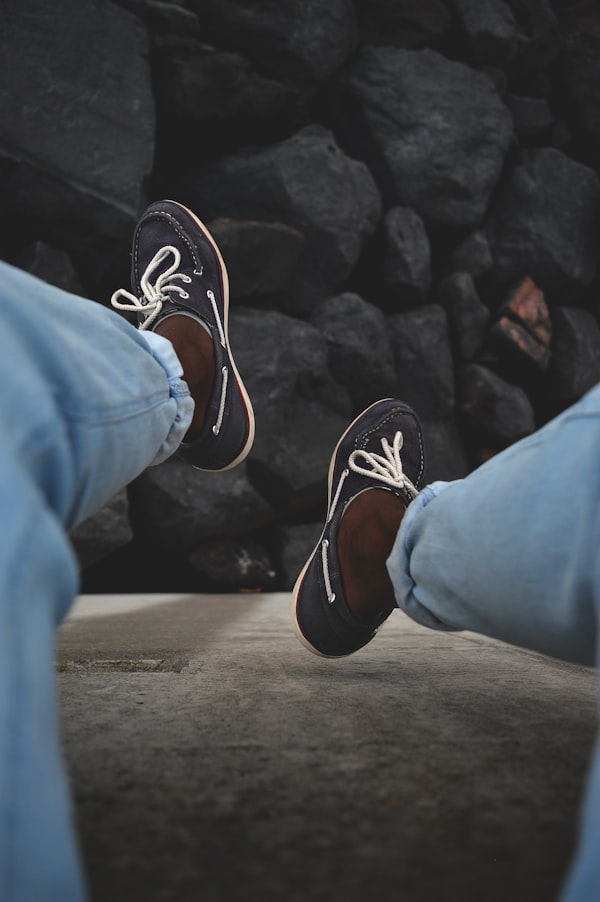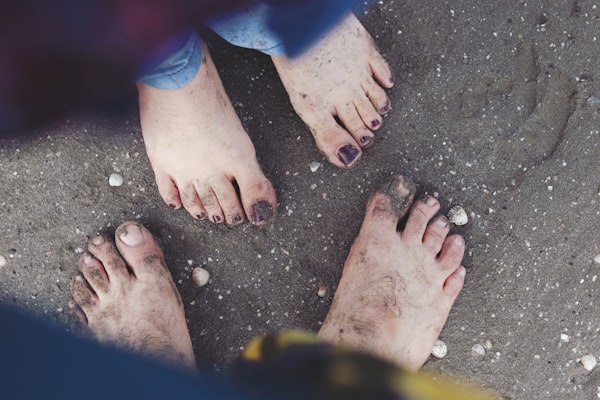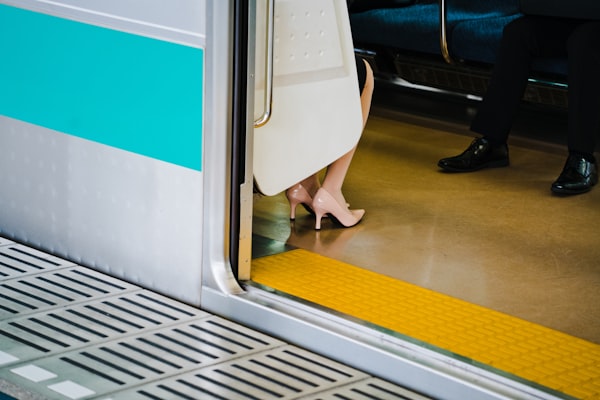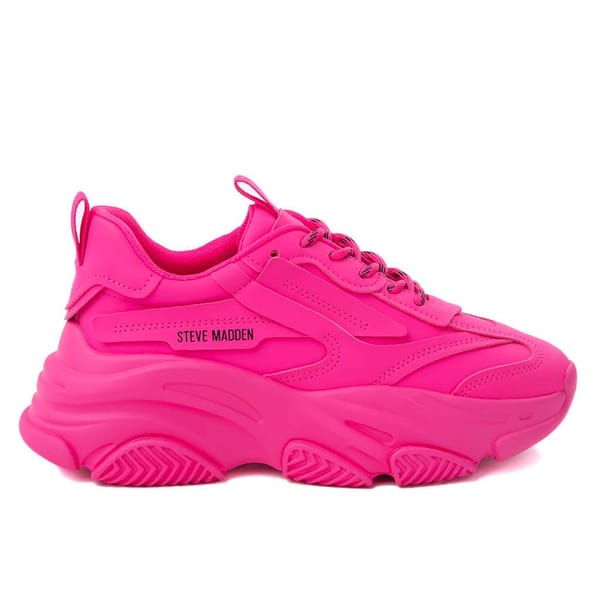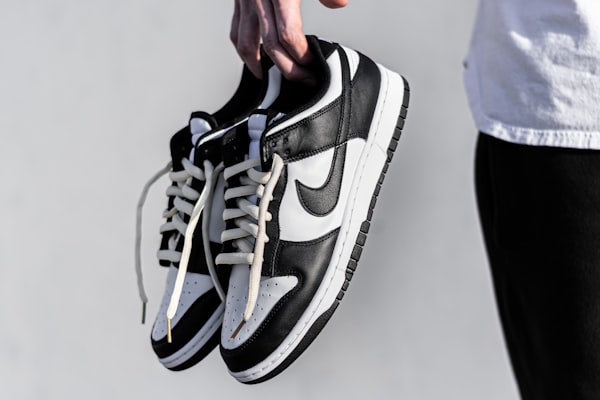Do you suffer from Accessory Navicular Syndrome (ANS) and struggle to find comfortable shoes?
Finding the right shoes can be like finding a needle in a haystack. These shoes are too tight. Those shoes are uncomfortable.
Imagine feeling like Goldilocks and finding shoes that are “just right,” a perfect fit.
Keep reading to learn what no one tells you about fitting shoes for Accessory Navicular Syndrome, and take the first step toward comfortable and supportive footwear.
What Is Accessory Navicular Syndrome?
Accessory Navicular Syndrome (ANS) is a condition that affects the bones and tendons in the foot, caused by the presence of an extra bone called the accessory navicular bone. This bone is located on the foot's inner side, and when it becomes irritated and inflamed, it can result in pain and discomfort. The syndrome can develop due to various factors such as overuse, injury, or improper foot mechanics.
ANS is grouped into three types depending on the growth's size and location.

Why Is Shoe Fit so Important?
Shoe fit is vital for people with Accessory Navicular Syndrome (ANS) because the right shoes can help to manage symptoms and prevent further injury.
Ill-fitting shoes can cause pain and discomfort, leading to foot conditions such as blisters, calluses, and ingrown toenails. They can also cause or exacerbate existing foot conditions such as plantar fasciitis, heel spurs, and accessory navicular syndrome.
Shoes that do not fit properly can cause poor posture and gait. When the feet are not supported correctly, it can lead to problems in the legs, hips, and lower back. This can cause pain and can lead to long-term injury and chronic pain.
Ill-fitting shoes can also cause damage to the shoes themselves. Shoes that are too tight can cause the leather to stretch and lose shape, while shoes that are too loose can cause blisters and calluses.
Lastly, shoes that fit correctly can help to improve overall foot health. They can help to distribute weight evenly across the foot, reducing stress on specific areas and providing the necessary support and cushioning to protect the foot from injury.

Proper shoe fit is crucial for maintaining foot health and preventing long-term injuries. It's essential to find shoes that fit well, provide enough support, and are comfortable.
What Are the Criteria for A Good Fit?
When shopping for shoes, trying on several different styles and brands is essential to find the best fit for your feet. If you’re looking for our picks, check out our review of the best shoes for ANS, compiled by type/occasion.


When shopping for shoes on your own, it is crucial to consider the following criteria for fit:
1. Length
Stand up and walk around in the shoes to ensure they feel comfortable and your heel doesn't slip out of the shoe.
The shoe should fit snugly but not too tight, with about a thumb's width of space between the end of your longest toe and the tip of the shoe.
2. Width
The shoe should fit snugly but not too tight around the width of your foot, with enough room for your toes to wiggle.
Press the sides of the shoe to ensure enough space for your feet to spread out. Your feet should not be cramped or cramped.
3. Contour of The Footbed
The footbed should mold to the shape of your foot. It should allow your foot to spread out and be supported naturally as it moves through a full range of motion.
With a proper fit, you should not feel any pinching, rubbing, or points of uneven pressure along the bottom of the foot.
4. Arch Support
The shoe's arch should fall in place with the natural placement of your arch. This will help to distribute pressure evenly, increase stability, and reduce excessive movement in the footbed.
The support should feel uniform from the front to the back of the arch, and you should be able to press the arch down, but not easily.
5. Toe Box-Sizing
Ample room in the toe box will allow your toes to spread naturally, move comfortably, and have adequate ventilation. Your thumb should be able to press down to the bottom of the shoe without any toes getting in the way.
There should also be about one finger’s width of space between your longest toe and the end of the shoe. You can check this by slipping a finger between the heel of your foot and the heel of the shoe. There should be enough room for your finger to sink to the bottom of the shoe.
6. Heel Height and Heel Cup
If you are going to use the shoes for activities that involve a lot of walking or standing, such as work or leisure, a heel height of around 1-2 inches is recommended. This will provide enough support and cushioning for the foot while reducing stress on the accessory navicular bone.
A lower heel height of around half an inch to one inch is recommended for more high-impact activities such as running or playing sports. This will provide more stability and reduce the risk of injury.
Also, a deep heel cup is essential because it helps keep the heel in a stable position, reducing the pressure on the accessory navicular bone and other parts of the foot. It also aligns the heel with the ankle, knee, and hips, which can help to improve posture and reduce the risk of injury.
7. Heel Slippage
Ensuring the shoe fits snugly and securely around the heel is essential. The heel should be securely placed, with no slipping or sliding around.
You can use the "heel grip test" to check for heel slippage when trying on shoes. Simply slide your foot forward in the shoe while it's on your foot; if your heel slips out of the back of the shoe, it's too big.
Another option is to use heel grips or heel liners that can be inserted into the shoe to help keep the heel in place. Additionally, lacing the shoes correctly can also help to prevent heel slippage.
8. Ankle Support
Proper ankle support is essential because the extra bone in the foot can cause discomfort and instability in the ankle. One way to ensure that the shoe provides extra support to the ankle is to look for shoes with a higher ankle. High-top shoes or shoes with straps that wrap around the ankle can help to keep the foot secure and prevent the ankle from rolling or twisting.
Another option is to look for shoes with reinforced heels and counter, which can provide extra support to the ankle and help to keep the foot in a proper position. This can reduce the risk of injury and make walking and moving around easier.
When trying on shoes, it's essential to ensure that the shoe fits snugly and securely around the ankle. The ankle should be securely placed, with no slipping or sliding around. It's also essential to ensure the shoe is not too tight or restrictive, which can cause discomfort and impede movement.
9. Traction
Good traction prevents pain and discomfort while walking or standing, especially on slippery or uneven surfaces. One way to ensure the shoe provides good traction is to look for shoes with a non-slip sole or outsole. A non-slip sole is designed to provide good grip and traction on various surfaces, including wet and slippery surfaces. This can help prevent slips and falls, making walking and moving around easier.
Another option is to look for shoes with a textured outsole, which can provide additional grip and traction on various surfaces. The outsole should be made of a durable and flexible material that can adapt to different terrains, providing a more comfortable and stable ride.
When trying on shoes, it's essential to ensure they fit snugly and securely. The shoe should provide good traction and prevent slips and falls. To check the traction, try walking on different surfaces, such as tile or carpet, to see how the shoe performs.
10. Comfort
We cannot overstate the importance of comfort. Stand up and walk around in the shoes to ensure no pinching, rubbing, or pressure. Any discomfort can irritate the accessory navicular bone, worsening Accessory Navicular Syndrome (ANS) pain.
Make sure your feet don’t get too hot. Breathable construction materials are a must because they allow heat to escape and cooler air to enter. This prevents sweat from accumulating inside the shoe, keeping feet cool and comfortable.
Why Should I Have My Feet Measured?
When finding the right shoe fit, one of the most important things to consider is the size of your feet. However, it's essential to remember that shoe size can change over time. Factors such as age, weight gain, pregnancy, and certain medical conditions can all affect the size and shape of your feet.
That's why regularly measuring your feet is essential, especially if you're experiencing pain or discomfort while wearing shoes. This will ensure that you get the correct shoe size and help prevent issues such as blisters, calluses, or pinching.
It's also important because one foot may be slightly larger than the other. This is a common occurrence caused by various factors, such as genetics, injury, or overuse.
To ensure a proper and comfortable fit, it's crucial to fit the shoe to your larger foot. This means that if one foot is larger than the other, you should choose the size that fits the larger foot and make any necessary adjustments to the other foot.
When measuring your feet, it's essential to ensure the measurement is taken while standing. This will give you the most accurate measurement and help ensure the shoes fit correctly and comfortably.
What Features Should I Look for In a Shoe?
When choosing shoes for Accessory Navicular Syndrome, paying close attention to the shoe's features is essential.
Appropriately supportive and cushioned shoes can help distribute weight evenly and reduce the stress on the accessory navicular bone, reducing pain and discomfort associated with ANS.
Flexible shoes that permit natural movement of the foot can help decrease stress on the bones and tendons in the foot.
Shoes crafted from breathable materials, like leather, offer better support and promote better airflow, keeping feet comfortable for extended periods compared to shoes made from synthetic materials.
The right shoe choice will meet several criteria.

Tips from Our Editors
- Make sure to try on shoes with the same type of socks you will be wearing when you use them, and walk around the store to make sure they feel comfortable and supportive.
- Speaking of socks, moisture-wicking socks assist in keeping your feet cool and dry.
- Be sure to bring your orthotics or inserts when you go shoe shopping if you use them.
- A good rule of thumb is to try on shoes at the end of the day or after a workout when your feet are the most swollen; this will give you a better idea of how the shoes will fit during the day.
- Don’t plan on shoes stretching to fit your feet over time. While some materials, such as leather, may soften and mold to the shape of your feet with wear, this process is not guaranteed and should not be relied on to achieve a proper fit. Buying shoes that are too small with the expectation that they will stretch to fit your feet can lead to discomfort, pain, and even injury.
- Even the best shoes can't prevent excessive stress on the foot during prolonged walking or exercise. The posterior tibial tendon and accessory navicular are particularly susceptible to overuse. To reduce the strain on these structures, make sure to take regular breaks and rest during activities that are physically demanding.
On a Final Note
Finding the right shoes for Accessory Navicular Syndrome can be a challenge. Like Goldilocks, you’ve got to try on several until you find the pair that is “just right.”
But with the right fit, you can minimize your symptoms and improve your overall foot health.
Now that we’ve shed some light on the things no one tells you about fitting shoes for ANS, you’ll be able to find the perfect pair of shoes and take control of your symptoms. And, if you’re still stumped, check out our review of the best shoes for ANS compiled by type/occasion.



